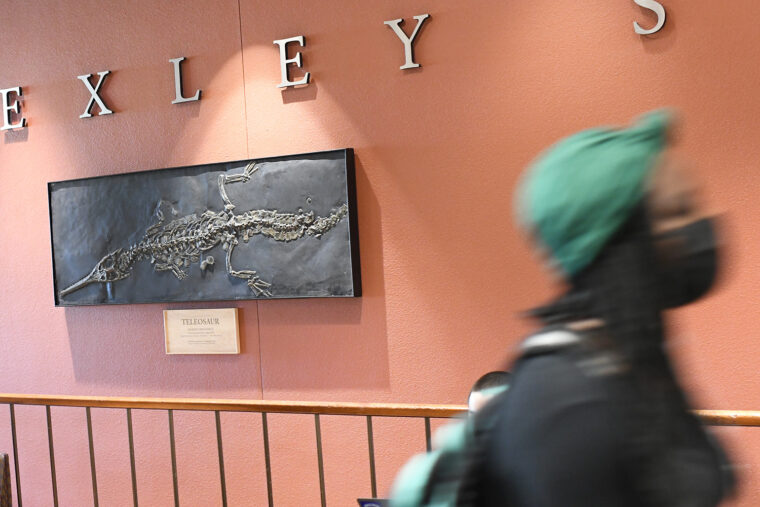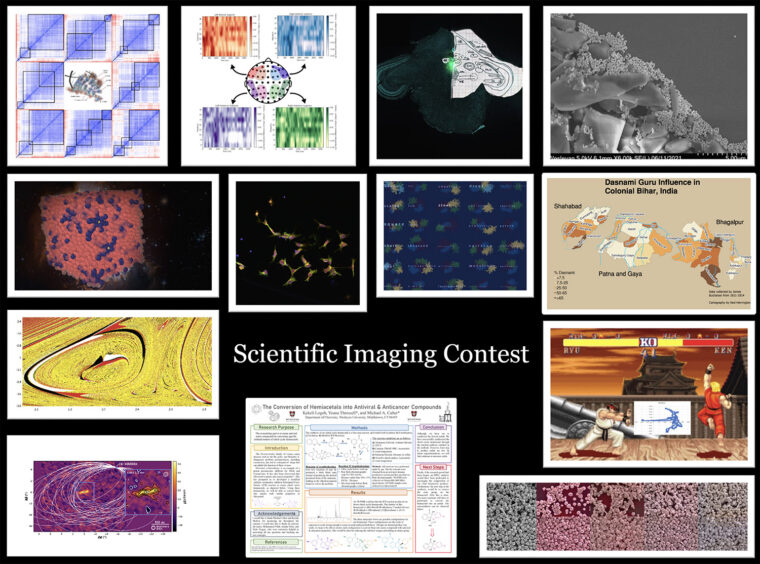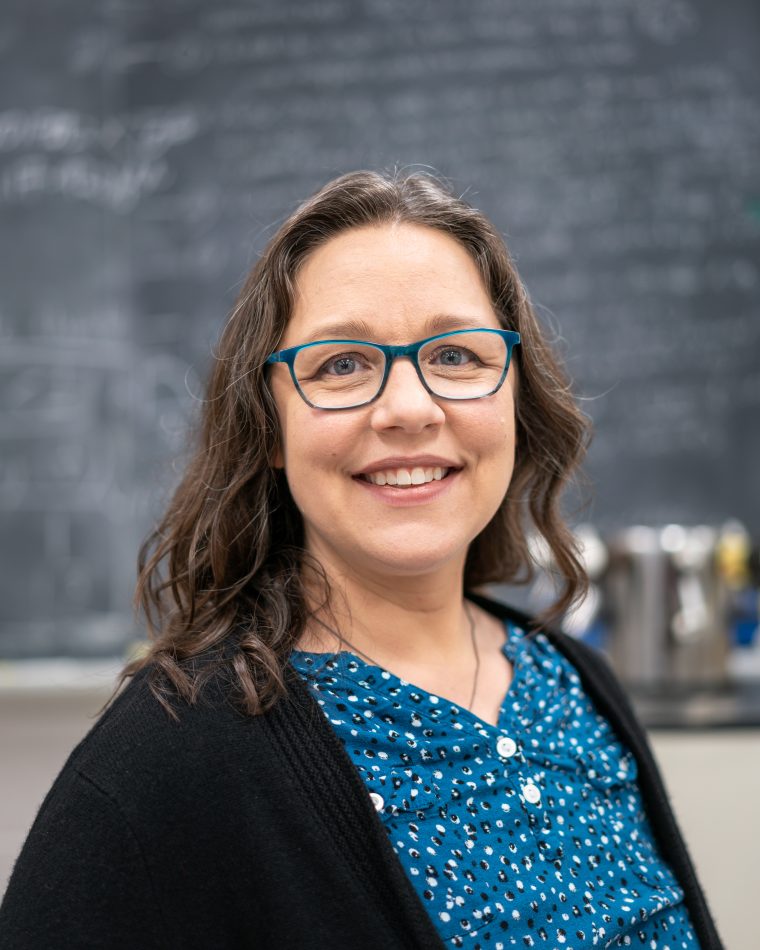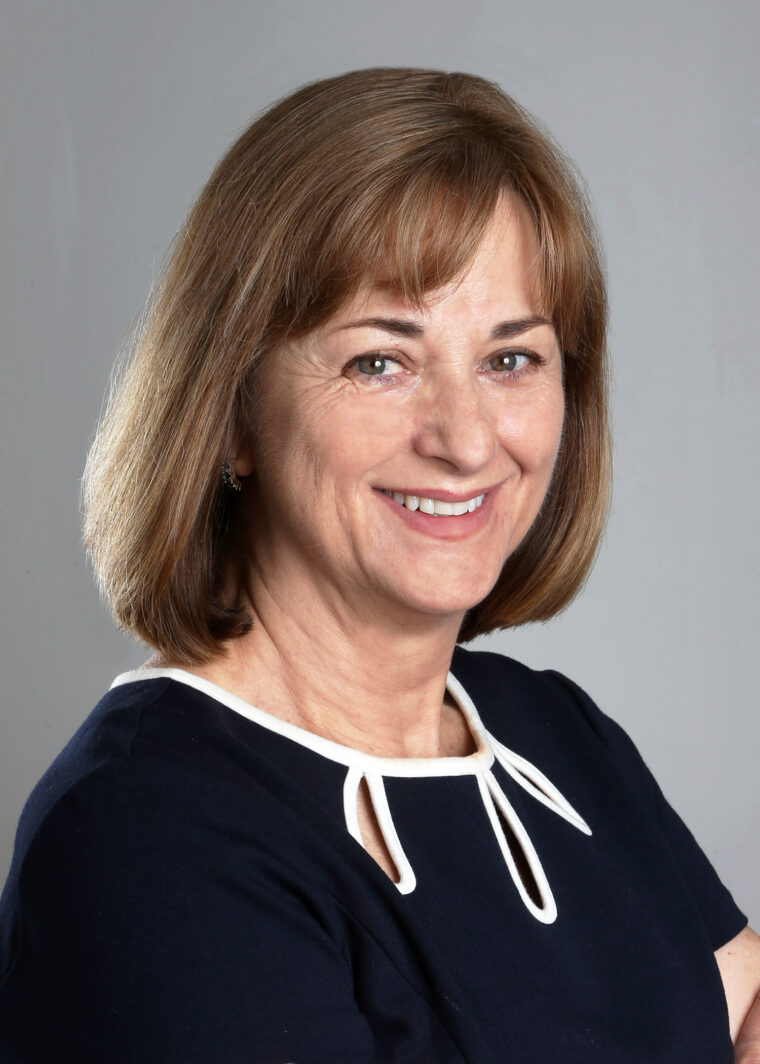A 7-foot-long extinct marine crocodile has finally found a permanent home on Wesleyan's campus—exactly 150 years after it arrived. Known as a Teleosaur (Macrospondylus bollensis), the sea-dwelling lizard lived during the early Jurassic period, approximately 180 million years ago. A cast was gifted to Wesleyan in 1871 by chemist Orange Judd of the Wesleyan Class of 1847, and the namesake of the University’s Orange Judd Museum of Natural Sciences. When the museum closed in 1957, more than 900 animal casts, including the Teleosaur, were moved into storage in random locations throughout campus. Over sixty years later, the Teleosaur cast was…
Reinhold Blumel, Charlotte Augusta Ayres Professor of Physics, recently co-authored a paper in Nature called “Power-optimal, stabilized entangling gate between trapped-ion qubits.” Yunseong Nam, one of the other co-authors, worked with Blumel as a graduate student. Blumel’s contributions to this paper stem from his connections to IonQ, a technology company for quantum computing. Nam is now the company’s chief theorist.
Assistant Professor of Earth and Environmental Sciences Raquel Bryant and Assistant Professor of Molecular Biology and Biochemistry Teresita Padilla-Benavides are two women in STEM whose work has recently been highlighted in national science journals. Bryant, who will join the Wesleyan faculty in July 2022, co-wrote a paper titled “Microfossil and geochemical records reveal high-productivity paleoenvironments in the Cretaceous Western Interior Seaway during Oceanic Anoxic Event 2” that will be in the December volume of Palaeogeography, Palaeoclimatology, Palaeoecology. Her work has also been featured as a Research Highlight in Nature Reviews Earth and Environment. Padilla-Benavides recently co-wrote an article titled “The…
Adjunct Assistant Professor of Environmental Studies Helen Poulos recently co-authored three new papers: “Wildfire and topography drive woody plant diversity in a Sky Island mountain range in the Southwest USA,” published in Ecology and Evolution on Oct. 5. “Choked out: Battling invasive giant cane along the Rio Grande/ Bravo Borderlands,” published in River Research and Applications on Sept. 20. And “Mixed-severity wildfire as a driver of vegetation change in an Arizona Madrean Sky Island System, USA,” written alongside Michael Freiburger ’21 and published in Fire on Oct. 20. Poulos’s research focuses on plant distribution patterns as a result of the…
Professor of Biology Sonia Sultan recently co-authored an article titled “Transgenerational effects of parent plant competition on offspring development in contrasting conditions” with BA/MA student Robin Waterman ’20. The article, published in Ecology on Sept. 8, examines the relationship between parent plants and their offspring, especially how competition among such parent plants can alter the next generation. “Conditions during a parent’s lifetime can induce phenotypic changes in offspring, providing a potentially important source of variation in natural populations. Yet to date, biotic factors have seldom been tested as sources of transgenerational effects in plants,” reads an excerpt from the paper’s…
At first glance, a viewer sees a single image of pink-tinted cubes, resembling a bacteria culture from high school biology. But upon closer examination, the viewer begins to see a series of other shapes—triangles to hexahedrons to tetahexahedraons (cubes with four-sided pyramids on each face). "If you stare at this image for a while, you can see that it's actually a series of five images in the top row, and five images on the bottom row, and each of these images show us nanoparticles that are made of gold and copper," said Brian Northrop, professor of chemistry. "It's intriguing, captivating,…
When launching spacecrafts and missiles, small navigational mistakes could lead to catastrophic results. A satellite could spin completely out of orbit, a missile could mistakenly strike a civilian territory, or a spaceship could end up at another planet altogether. Three Wesleyan researchers are collaborating on the development of a novel sensor that would benefit navigation and several other applications. The new, hypersensitive acceleration sensor is based on a principle borrowed from nuclear physics and has been developed at Wesleyan. It provides enhanced sensitivity and precision compared to conventional sensors. "Our underlying concept can be applied in a variety of sensing…
Erika Taylor, associate professor of chemistry, recently co-authored three papers and a book chapter related to (1) biomass to biofuel production and (2) development of new therapeutics to treat Gram-negative bacterial infections. Taylor's work investigates problems at the biological chemistry interface and seeks to find applications of her work to the fields of medicine and sustainable energy. Her chapter called “Lignin Enzymology – Recent Efforts to Understand Lignin Monomer Catabolism” in the book Comprehensive Natural Products III: Chemistry and Biology, and her paper “Identifying Metabolic Pathway Intermediates that Modulate Enzyme Activity: A Kinetic Analysis of the DesB Dioxygenase from Sphingobium…
Janice Naegele, Alan M. Dachs Professor of Science, dean of the Natural Sciences and Mathematics Division, and professor of biology, is the co-author of three recent publications. Naegele’s work focuses on stem cells and finding new treatments for epilepsy and brain damage. Naegele’s articles include the following: “Induction of temporal lobe epilepsy in mice with pilocarpine,” published by BioProtocol in February 2020. “Development of electrophysiological and morphological properties of human embryonic stem cell-derived GABAergic interneurons at different times after transplantation into the mouse hippocampus,” published by PLoS One in August 2020. “Optogenetic interrogation of ChR2-expressing GABAergic interneurons after transplantation into…
Thirteen Wesleyan faculty are rated among the top 1% most-cited researchers worldwide, according to a recent study by PLOS Biology. The study, led by Professor John Ioannidis from Stanford University, combines several different metrics to systematically rank the most influential scientists as measured by citations. More than six million scientists, who were actively working between 1996 and 2018, were analyzed for the project. The faculty include: David Beveridge, Joshua Boger University Professor of the Sciences and Mathematics, emeritus Fred Cohan, Huffington Foundation Professor in the College of the Environment, professor of biology Mark Hovey, professor of mathematics, associate provost for…






